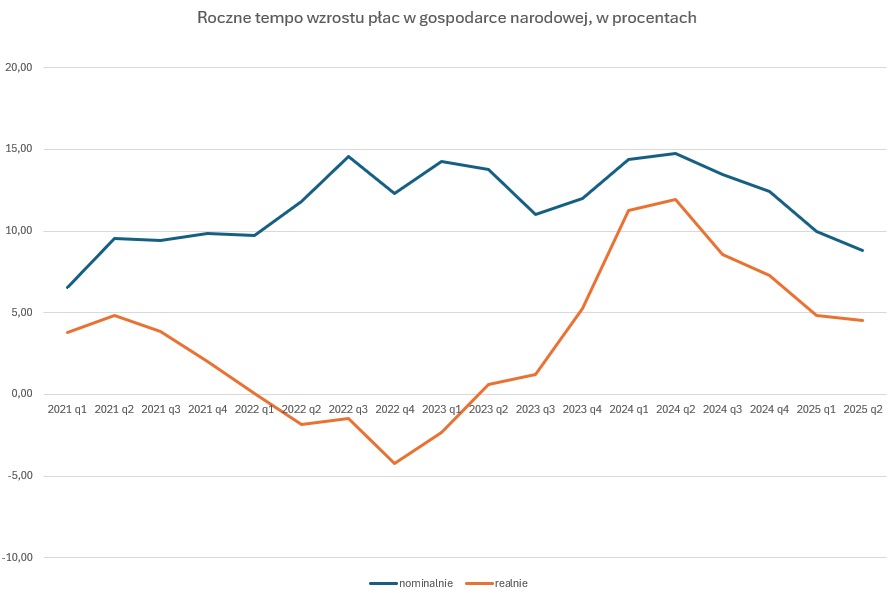A collapse in payouts. This hasn't happened in over four years.

- The average salary in the second quarter dropped to PLN 8,748.63 gross, mainly due to the lack of bonuses and premiums paid at the beginning of the year.
- Year-on-year, wages rose by 8.8 percent, the slowest pace in more than four years.
- Real wage growth, after taking inflation into account, amounted to 4.5%, which may support further interest rate cuts.
The average gross wage in the national economy fell to PLN 8,748.63 in the second quarter, from PLN 8,962.28 in the first quarter, according to the Central Statistical Office (GUS) . This situation occurs practically every year – it's a seasonal phenomenon, resulting from the fact that at the beginning of the year, in the first quarter, employees' accounts are often credited with bonuses, awards, and bonuses from the previous year. This factor is no longer present in the second quarter, so the average falls slightly lower.
What's important, however, is that average wages in the second quarter were 8.8% higher than a year earlier . This means they grew at the slowest rate since the beginning of 2021 , or over four years ago. Their growth was in single digits for the first time since the beginning of 2022.

Of course, wages are growing more slowly because prices in shops are also rising more slowly than a few years ago.
Taking inflation into account, the real growth rate of the average wage in the national economy is now 4.5%, the lowest since the third quarter of 2023 .
So we have a situation where wages are still rising, which is positive in itself, but they're no longer growing fast enough for the Monetary Policy Council to be concerned that this growth in itself is a new pro-inflationary factor. And if so, the data just released by the Central Statistical Office (GUS) may bring us closer to another interest rate cut in Poland .
wnp.pl





